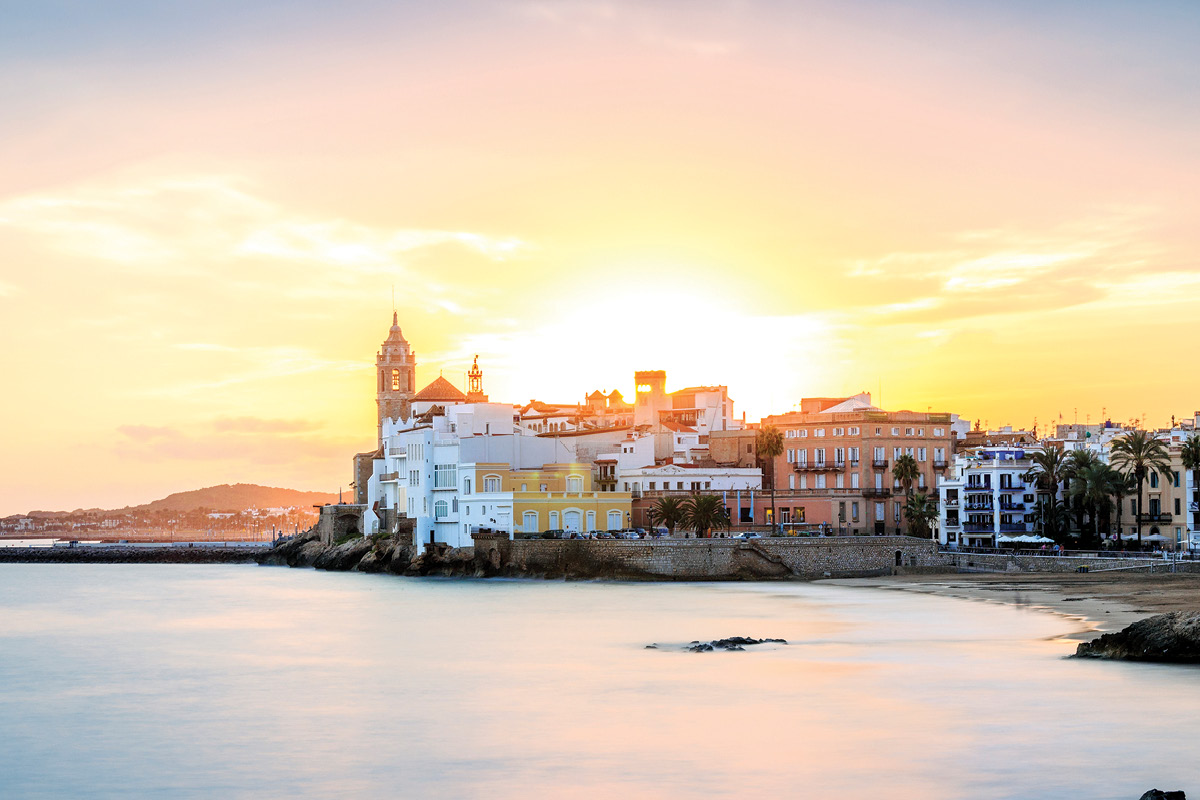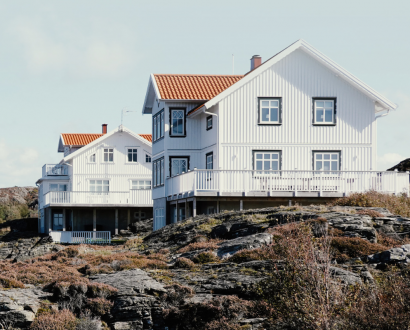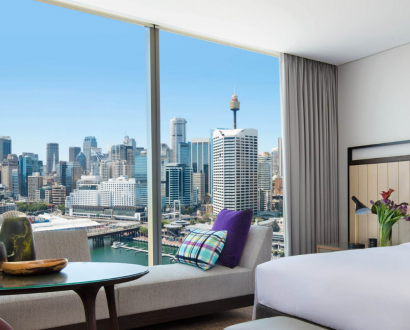Walking the winding cobblestone streets of Sitges is like wandering through a postcard. Quaint, whitewashed buildings with colourful shutters meander down steep hillsides, framing the spectacular blue of the Mediterranean Sea.
It makes for a pretty holiday scene that is all the more alluring for the history and culture packed into every twist and turn. I’m in the Spanish town, located just 25 minutes from Barcelona Airport and about a 40-minute drive from Barcelona city, on a Trail of Discovery.
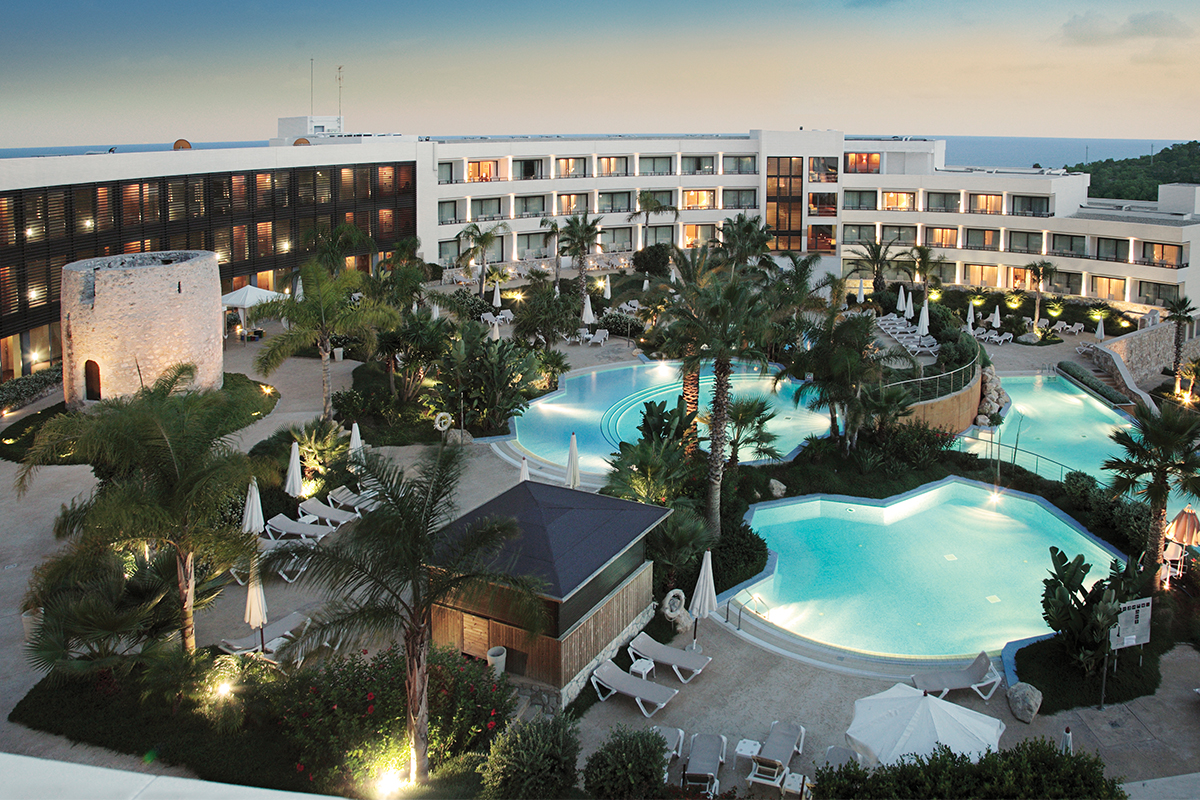
Local fashionista and blogger Ana Crank has picked her must-visit spots around her town, working with Dolce Sitges Hotel.
This cultural exploration is a treasure-hunt style walking tour of the town, perfect as a team-building activity for the Dolce’s guests making use of the hotel’s conference facilities.
Seaside tourism
The town has had many incarnations over the centuries. Cannons and fortification were once used to ward off pirates, while the white buildings along some of the charming streets feature a bright-blue painted line signalling what was traditionally the fishermen’s homes. Being by the sea means Sitges was once a thriving port, though today its location is more important to its main industry of tourism.
The surrounding Garraf Massif and its nearby hills are home to vineyards producing the local Malvasia de Sitges wine, which is traditionally paired with the town’s specialty, carquinyolis – a Catalan almond biscotti. The mountains create a micro-climate for the town and its 17 beaches, so it’s blessed with seemingly endless days of beautiful weather.
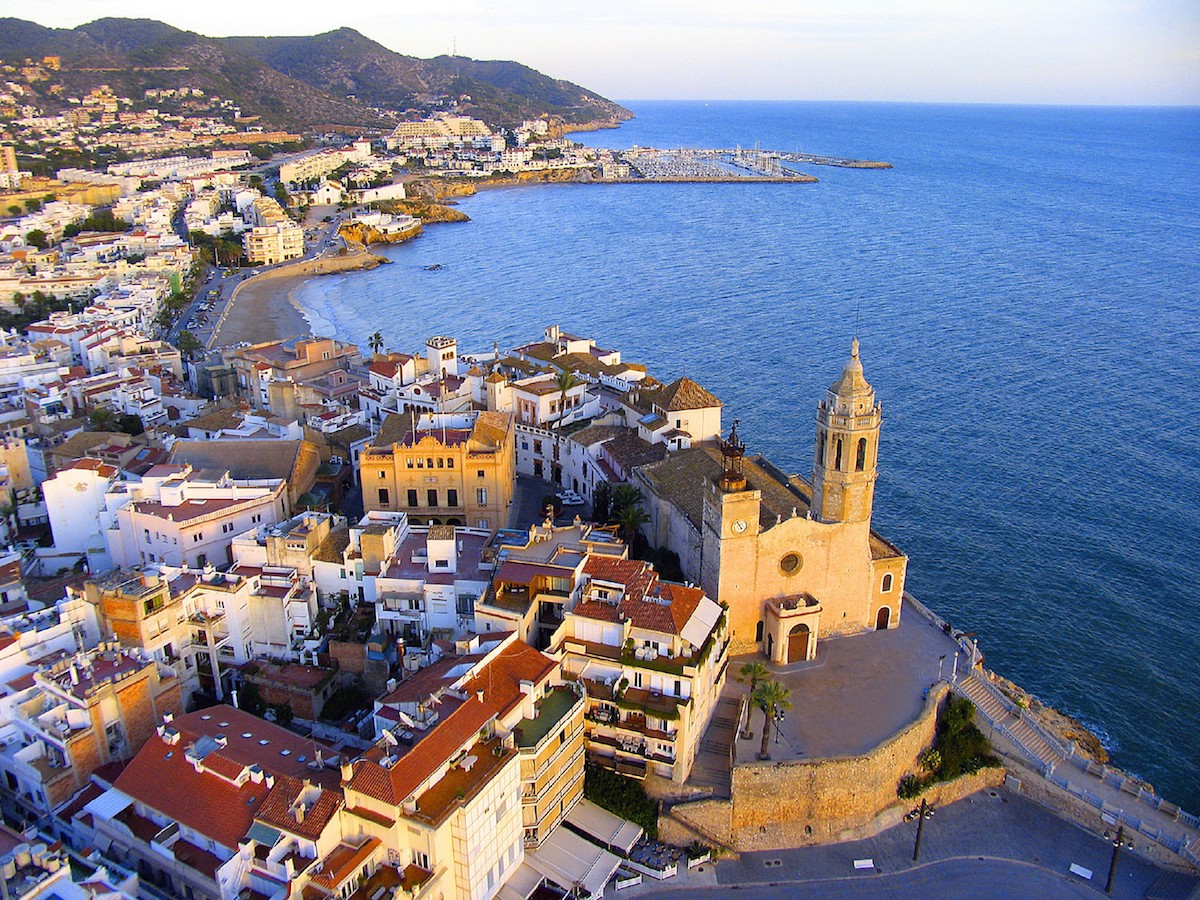
We enjoy the heavenly breeze coming off the Mediterranean as we follow our trail along the wide, palm-lined promenade. It spans the four-kilometre stretch of the town’s main beach and was built in the 1920s when Sitges became an affluent resort, booming again in the 70s. Opposite the beach are beautiful art nouveau buildings in pastel hues, while more modern mansions sprawl their way further up the hillside.
One of the most recognisable sights is the Church of Saint Bartholomew and Saint Tecla, accessed via a grand staircase at the end of the beach promenade. The building itself dates from the seventeenth century and has well-preserved baroque features, not to mention a commanding position overlooking the sea, beach and town below.
Ana points out where to stand for the best snaps of the church and view. Not only is our trail taking us on a cultural tour, but being curated by Ana guarantees the most photogenic highlights.
Artistic history
One of the main attractions of this charming Spanish town is the Cau Ferrat museum. The former home and studio of artist and writer Santiago Rusiñol is a two-storey treasure trove of his incredible personal collection of art, ironwork, tiles, ceramics, furniture and other objets d’art – there is even a stone fountain in one room, beside a large window and small terrace overlooking the sea.
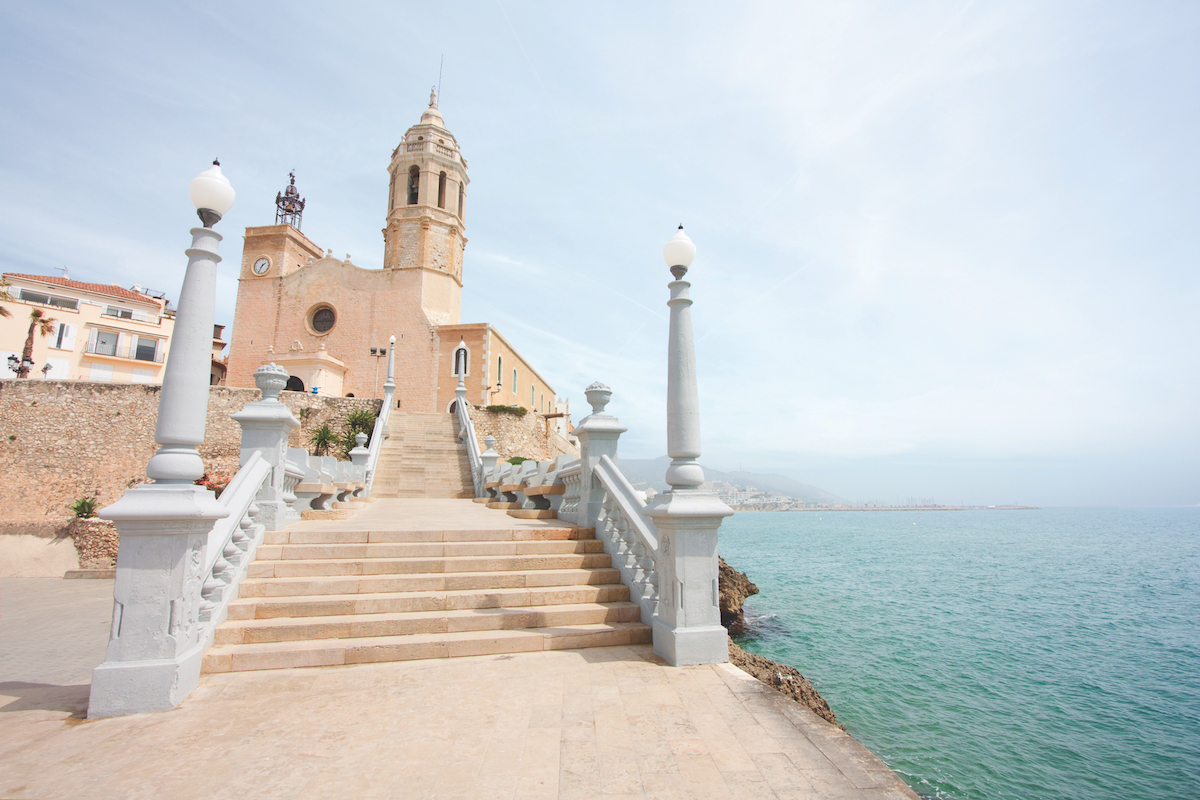
The walls are a brilliant Sitges blue, adorned with Rusiñol’s own art as well as those by many other artists, including early works by Picasso and El Greco.
Rusiñol was a beloved local artist and one of the most important figures of Catalonia’s Modernism movement, and his home was a popular refuge for artists in the nineteenth century.
As we exit the museum, I imagine this place as a gathering spot for creatives; it’s easy to picture artists congregating in the sun-dappled living space of Rusiñol’s home, so beautifully decorated with ornate tiles.
On our walk, we also encounter numerous statues honouring the people and stories from the town’s past. There are famous painters, the heritage of the Bacardi family, and even a mermaid to uncover among the medieval streets, peach-hued buildings and homes built into the side of the fourteenth-century stone wall that once enclosed the town.
Complementing the art and history is the vibrance of the town’s cosmopolitan social scene. “Sitges offers a really nice calendar through the year, with events like Carnaval, Fiesta Mayor, Sitges Film Festival, Corpus Cristi (flower carpet festival) and then obviously New Year’s Eve,” explains Ana. “I do recommend that visitors bring their credit cards,” she laughs.
The writer was a guest of Dolce Hotels and Resorts.

